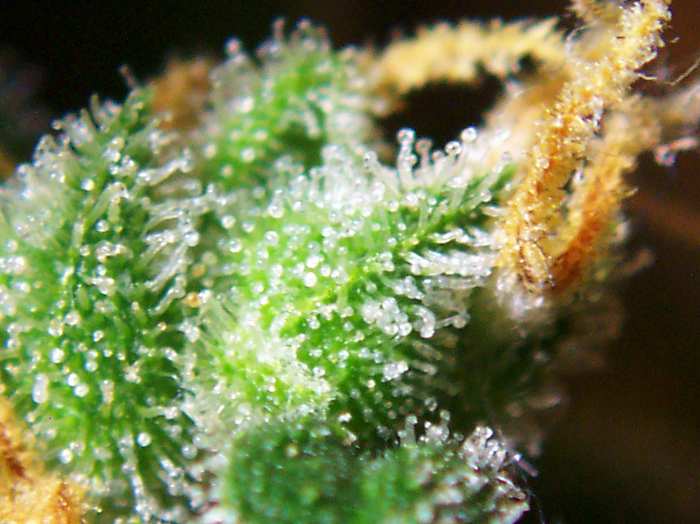Adaptations
The Cannabis plant has a very unique look and can be identified easily. The stalk is angular and hollow, branched and covered in fine hairs (Booth, 2003). The leaves are palmate in shape with serrated edges. Male plants are generally taller and flower earlier than the female plants. Female flowers grow closely together to form clusters "buds." At the base of the bud is the ovule of the plant and contains modified leaves called bracteoles. If the female plant is fertilized by the male plant, it concentrates most of the energy on development of the fruit. The oval achene is flattened, small, and contains only one seed. The seed is brown in color and hard.
Both the male and female plant contains resin. The reason for resin production is unknown, but some have hypothesized that it aids in the prevention of water loss of the seed, through transpiration. The reason for this hypothesis is because the higher the temperature is in the area in which the plant grows, the greater the amount of resin production. In very hot climates, the cuticle splits and resin is allowed to ooze down the stems. This cakes the plant in a water insoluble varnish which prevents water loss. Other scientists suggest that resin is produced to protect seeds from ultraviolet radiation or to trap pollen. Resin has another property and that is that it is a powerful intoxicant. Theorists suggest that this is to decrease bird and insect pests from harming the plant.
This is a picture of resin containing capitate stalked trichomes on a pistillate bract of Cannabis sativa.
